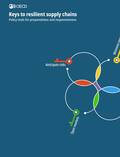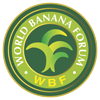Guidelines to increase the resilience of agricultural supply chains
The agricultural commodity supply chain is a complex network that connects the production system with the consumer through a series of operations such as production, manufacturing, packaging, distribution, retail and storage. At the same time, it connects companies that provide inputs such as seeds and fertilizers and producers. External shocks, such as natural disasters, conflicts and diseases, are a threat to the functioning of agricultural supply chains.
For example, the effects of the COVID-19 pandemic on food and agriculture disrupted agricultural supply chains and increased food insecurity by undermining the livelihoods and capacity to access food for millions of people. As the COVID-19 pandemic unfolded, considerable attention began to be paid to the resilience of agricultural supply chains in a time of crisis.
In an effort to provide evidence-based advice, and with support from the Japanese Government, FAO undertook research on the impacts of the COVID-19 crisis and natural disasters on agricultural supply chains and markets and prepared guidelines for increasing the resilience of agricultural supply chains. The guidelines build on and complement The State of Food and Agriculture 2021 – Making agrifood systems more resilient to shocks and stresses, written within the context of the call for concrete actions made by the first United Nations Food Systems Summit in September 2021.
What is resilience? The United Nations defines resilience as: “By resilience is meant the ability of individuals, households, communities, cities, institutions, systems and societies to prevent, anticipate, absorb, adapt and transform positively, efficiently and effectively when faced with a wide range of risks, while maintaining an acceptable level of functioning, without compromising long-term prospects for sustainable development, peace and security, human rights and well-being for all ”.
|
Featured Resources
-
Guidelines to increase the resilience of agricultural supply chains
Published: April 2022
-
The State of Food and Agriculture 2021
Published: November 2021
-
The impact of disasters and crises on agriculture and food security: 2021
Published: March 2021
-
UN Common Guidance on Helping Build Resilient Societies
Published: December 2022










